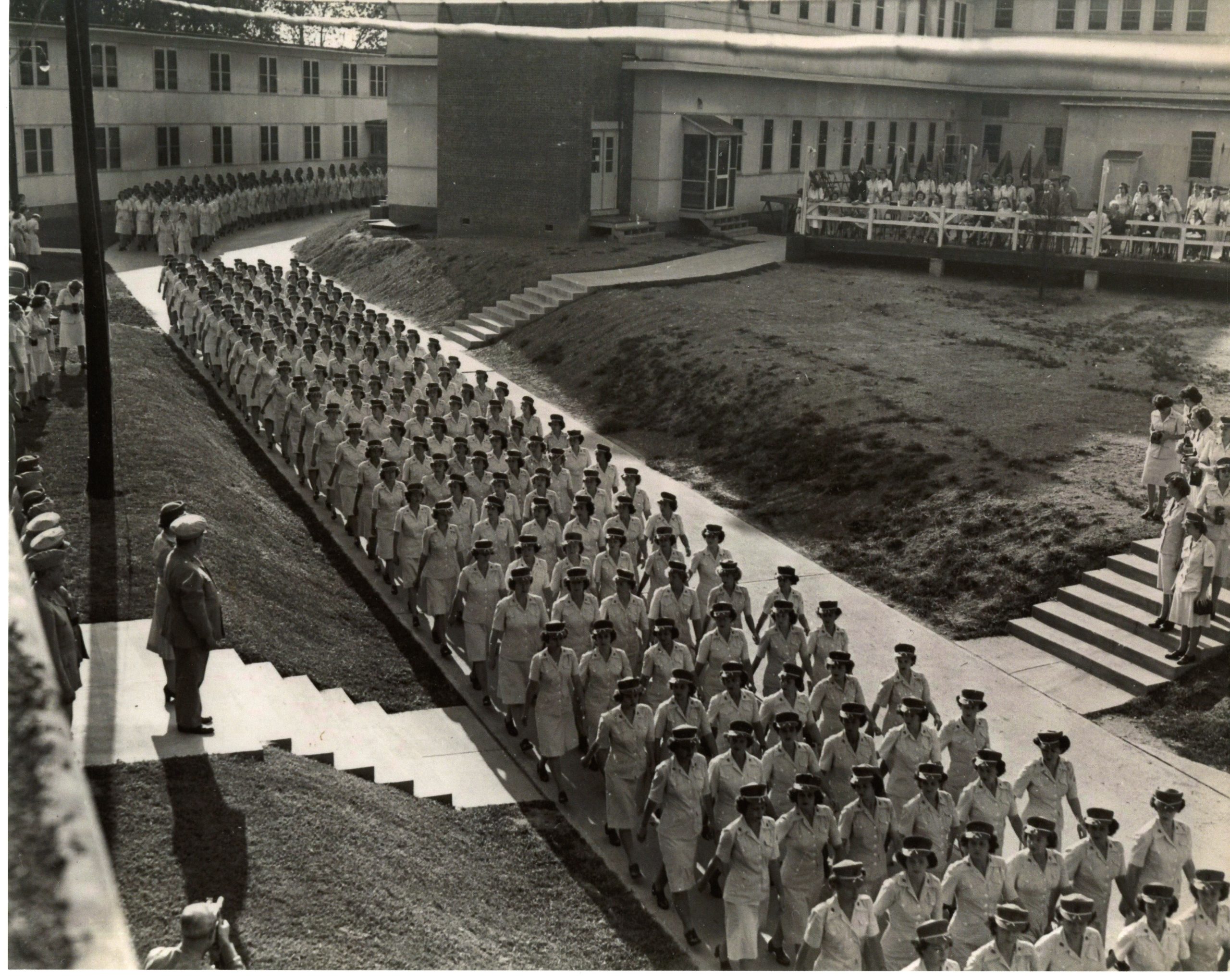When Liza Mundy’s book Code Girls: The Untold Story of the American Women Code Breakers of World War II was published in October 2017, one of the women featured in it, Dorothy Ramale, was a spry 96 years old (at the time of this writing, she is 101!). A few months earlier, in June 2017, she participated in the Virginia War History Commission’s Profiles of Honor scanning project, presenting a volunteer in Fairfax, Virginia, with a portrait of herself dressed in uniform to be scanned and preserved by the Library of Virginia.

Dorothy Ramale
Profiles of Honor Digital Collection. Loaned for scanning by Dorothy Ramale.
In the accompanying biographical information she provided, she was very succinct: “From June, 1943 to July, 1944 Ramale worked in Cryptographic Analysis for the Army Signal Corps in Arlington, Virginia.” Even that much information would have been illegal to share in years prior. A few months later, Liza Mundy introduced her readers to Ramale’s story alongside myriad other women who worked in cryptography during World War II.
The Profiles of Honor digital collection includes pictures of other World War II female veterans who are still waiting for their stories to be told in full. Although women were not allowed to serve as fully integrated members of the armed forces, they found ways to participate. Women served both overseas and in the United States in a variety of roles, both in the armed forces and as civilians.
Women served in various branches of the armed forces, often relegated to “reserve” or “auxiliary” sections specifically set up for women. Ramale herself worked as a civilian in the Army, and then served as a WAVE (Women Accepted for Volunteer Emergency Service) in the Navy. Other Virginian WAVEs spotlighted in Profiles of Honor include Machinist Mate Third Class Charleton Virginia Wilhoit Sykes (1920-2004) of Albemarle County and Cecilia Pillis Galligan (1920-2013), who often was not mentioned in newspaper articles heralding the service of her seven brothers during the war.
The United States Army’s Women’s Army Corp (WAC) employed women in various jobs. Clarice G. Clark (1919-1989) of Clifton Forge, Virginia, and PFC Geneva Burford Ross (1919-1999) served in the WAC. Helen Brent Van Ells (1919-2016) joined the WAC after graduating from Duke University. She worked in Baltimore documenting reported sightings of enemies turned in by volunteer watch groups. PFC Olivia Virginia De Sa Baugh Clark (1926-2022) served as an Army WAC in Patton’s Third Army from September 1944 to January 1946 in Germany.
Women served as nurses both inside and outside the armed forces. Second Lt. Kathryn Yiensena Bough-Nicols (1909-2004) served as an Army nurse at the Tuskegee Army Airfield. Cathryn Hudgins Chitty (1919-2013) served as a 1st Lieutenant in the Army Nursing Corp in the South Pacific during World War II aboard the U.S.S. Mercy (AH-8). Katie Carrol Rhoden (1898-1991) served as a Red Cross Nurse.
Civilians also worked within the Army structure. Jean Knight Childs (1926-2019), only 17 at the time, worked with maps as part of the Aircraft Warning System at the Richmond Filter Center of the First Interceptor Command of the United States Army Air Force (USAAF).
In April 2022, the Library of Virginia Foundation received a $315,000 National Endowment for the Humanities (NEH) grant to digitize our 250,000 separation notices of WWII-era Virginia service members. This extensive project will take at least three years to complete but will allow the information on the forms to be searchable and accessible to online users. The information on the forms includes aspects of both the veterans’ civilian and military lives, which will allow researchers and historians to tell the stories of the women who served in the military more completely.
Join us virtually on October 18, 2022 for a discussion of Code Girls by Liza Mundy as part of our Common Ground Virginia History Book Group. Registration is free, but required.
Historical Digital Collections
- Virginia newspaper articles about WACs (Virginia Chronicle)
- Virginia newspaper articles about WAVES (Virginia Chronicle)
- Virginia newspaper articles about Arlington Hall (Virginia Chronicle)
- WAAC posters (World War II Poster Collection)
- WAAC photographs (U.S. Army Signal Corps Photograph Collection)
- An Interview with Elizabeth McIntosh (Virginia Women in History)
Historical Publications
- Flint, Margaret. Dress Right, Dress: The Autobiography of a WAC. New York: Dodd, Mead, 1943.
- How to Serve Your Country in the WAVES or SPARS.Washington, D.C.: U.S. Navy Dept., 1942.
- Ross, Nancy Wilson. The WAVES, the Story of the Girls in Blue. New York: H. Holt and Company, 1943.
- Shea, Nancy Brinton. The WAACS. New York: Harper, 1943.
- Schools & Rates for Navy Women.Washington, D.C.: U.S. G.P.O., 1944.
Federal Publications
- Breaking Codes, Breaking Barriers : The WACs of the Signal Security Agency, World War II (2001)
- The Friedman Legacy: A Tribute to William and Elizebeth Friedman (2006)
- The Invisible Cryptologists: African-Americans, WWII to 1956 (2001)
- The Neglected Giant: Agnes Meyer Driscoll (2015)
- Sharing the Burden: Women in Cryptology during World War II (1998)
- A Woman’s War Too: U.S. Women in the Military in World War II (1995)
- The Women’s Army Corps (1954)
Books
- Holm, Jeanne, and Judith A. Bellafaire. In Defense of a Nation: Servicewomen in World War II. Arlington, VA: Vandamere Press, 1998.
- Lewin, Ronald. The American Magic: Codes, Ciphers, and the Defeat of Japan. New York: Farrar Straus Giroux, 1982.
- McIntosh, Elizabeth P. Sisterhood of Spies: The Women of the OSS. Annapolis, MD: Naval Institute Press, 1998.
- Putney, Martha S. When the Nation Was in Need: Blacks in the Women’s Army Corps During World War II. Lanham, MD: Scarecrow Press, 2001.
- Yellin, Emily. Our Mothers’ War: American Women at Home and at the Front During World War II. New York: Free Press, 2004.
Header Image Citation
Members of the U.S. Marine Corps Women’s Reserve marching at Henderson Hall, Arlington, Virginia, ca. 1944. Profiles of Honor Digital Collection. Loaned for scanning by Evelyn Spaulding.










